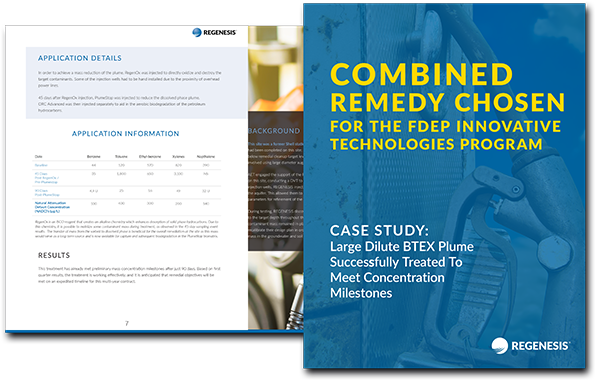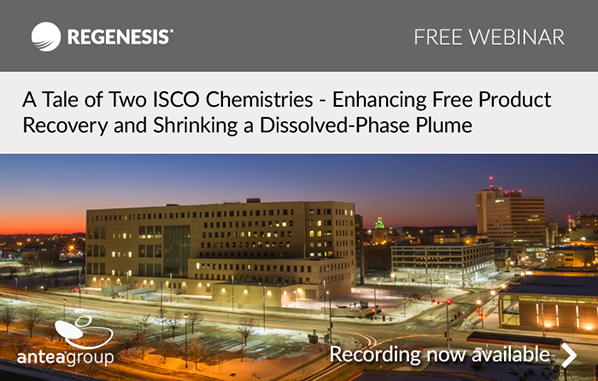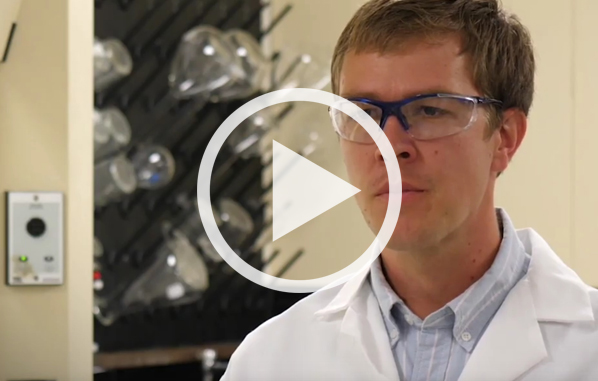Providing Cost-Effective, Proven, Remedial Solutions for Gas Stations, Leaking UST’s and Petroleum Hydrocarbon Sites
Resulting Contamination and Environmental Impacts
Most contamination at retail petroleum gasoline service station sites stem from UST and dispenser island leaks, resulting in gasoline and diesel fuel impacts at concentrations from free-product to the dissolved-phase range.
The gasoline additive methyl-tertiary butyl ether (MTBE) is also often found at these sites and requires remediation. In some cases, more complex mixed contaminant plumes can form resulting from migrating chlorinated solvent releases at nearby operations.
Location
Retail petroleum gasoline service station sites are challenging for a number of reasons. Typically located in urban areas, these sites are often attached to strip malls with highly trafficked areas and located on a relatively small property footprint. At active gasoline service stations, maintaining commercial operations without site disruption is critical.
Infrastucture
Soil, groundwater and vapor phase contamination can be located both on and off-site, with significant interaction with underground infrastructure such as steel and fiberglass underground storage tanks (UST’s), dispenser island piping, electrical, etc.
Budget
Budgets for cleaning up retail petroleum sites are typically conservative and for orphan sites rely on limited state-funded programs.
Retail Petroleum and Service Station Environmental Solutions

Approaches
These solutions can be achieved using well-documented, proven and cost-effective in situ approaches such as enhanced desorption, enhanced aerobic biodegradation and/or in situ chemical oxidation (ISCO).

Solutions
Soil and groundwater remediation solutions at gasoline service station sites may include the following: excavations (tank pulls), soil mixing, groundwater source area treatment, free-product removal, dissolved-phase groundwater plume treatment, plume cut-off barriers, mixed-plume remediation strategies.
Products Used for Retail Petroleum and Service Station Remediation
REGENESIS provides a range of technologies for use at retail petroleum service station sites which include: ORC Advanced (powder/pellets), RegenOx for underground infrastructure compatibility, PersulfOx, and PetroFix Activated Carbon Liquid Amendment.
Planning a retail petroleum service station remediation project?
Contact us to explore solutions and options.
FAQs about Retail Petroleum and Service Stations
The discovery of an underground fuel oil tank should initiate further investigation. A search for corresponding paperwork should be conducted to determine the history of the tank and its contents. If the tank is not in use, it should be removed and the surrounding soils and groundwater tested by a licensed environmental professional as leaving it in place will only serve as a future liability.
The steps for cleanup will depend on the extent of the leak and other site-specific conditions. In general, the tank should first be removed in compliance with local regulations and the American Petroluem Institute’s recommended pratices. Based on sampling results, any impacted soil and groundwater can either be treated in place or removed.
After the tank is removed, the extent of the environmental impact should be determined with an assessment of the surrounding soil and groundwater. Licensed environmental professionals should then be hired to develop, execute, and evaluate a remedial plan based on the budget, timeline, and site-specific conditions.

 Americas
Americas Europe
Europe Français
Français Deutsch
Deutsch Italiano
Italiano Español
Español










